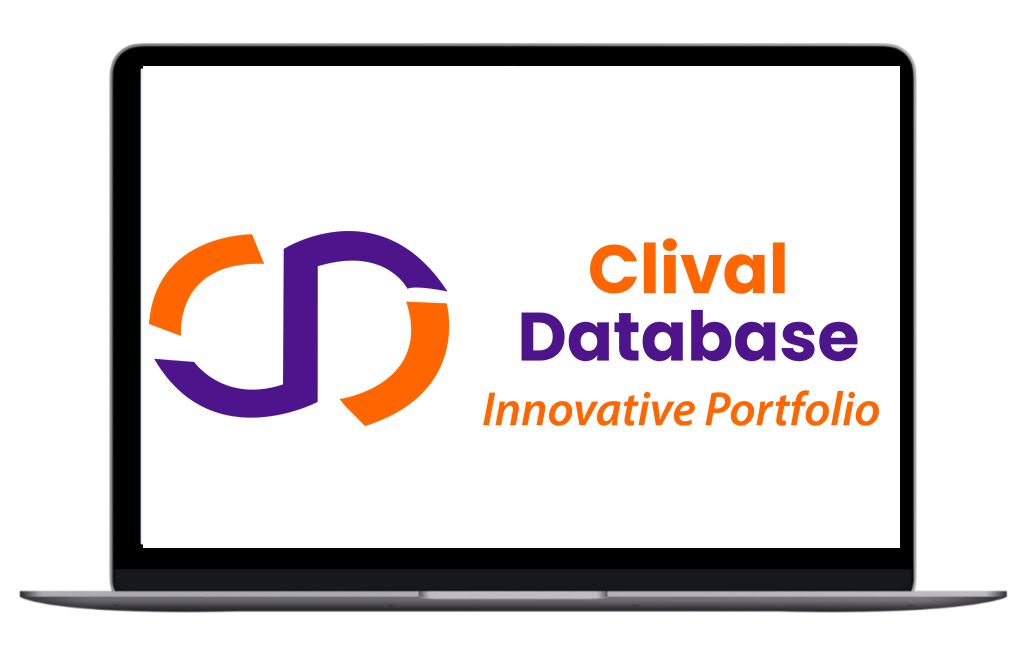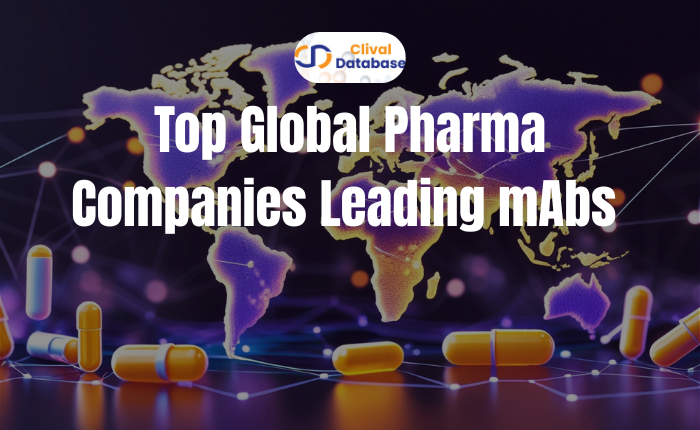9 Pharma Giants Leading the Monoclonal Antibody with FY24-25 Revenue
Nowadays, the race in the pharmaceutical industry has shifted from just being bigger in size and market value. Companies have realized the era of innovation and advance drug developments is around the corner. One of the key areas that is witnessing a surge is monoclonal antibodies.
The future of medicine is being rewritten by mAbs and oncology breakthroughs. This blog goes through the 9 leading pharma companies that are making great leaps in the mAbs and oncology. And the revenue of these companies reveal more than financial strength.
They show where science, innovation, and patient care are headed. From oncology blockbusters to next-gen biologics, the winners of 2024 are setting the tone for the next decade.
In this post, we’ll break down the top nine pharmaceutical companies by revenue, uncover their focus areas, and spotlight the strategies driving their success.
Quick Look at the Top 9 Giants in mAB
|
S. no. |
Company |
Estimated Revenue |
Country |
Focus Area |
|
|
Johnson and Johnson |
$ 88.8 Billion |
United States |
Broad Therapeutics including mABs |
|
|
Roche |
$ 65.3 Billion |
Swtizerland |
Oncology, Immunology, Newer mABs |
|
|
MERCK |
$ 64.2 Billion |
United States |
Oncology (Keytruda) |
|
|
Pfizer |
$ 63.6 Billion |
United States |
Oncology, inflammation, COVID-era falloff |
|
|
Abbvie |
$ 56.3 Billion |
United States |
mAB-driven immunology |
|
|
AstraZeneca |
$ 54.1 Billion |
United Kingdom |
Oncology, respiratory mABs |
|
|
Novartis |
$ 50.3 Billion |
Swtizerland |
Immunology, ophthalmology mABs |
|
|
Sanofi |
$ 44.3 Billion |
France |
Rare, respiratory, recombinant mABs |
|
|
GSK |
$ 40.1 Billion |
United Kingdom |
Immunology, biosimilars mABs |
Top 9 Pharmaceutical Leaders by Revenue
The market of Monoclonal antibodies are growing at an enormous scale, defined by scale, innovation, and biologics. But there are 9 companies that are dominating this section.
It is true that each of the companies have a different strategy and approach, but all of them are working towards the combined goal of innovating the drug development.
Let’s break down how the top performers earned their spot and where they’re heading next.
Johnson & Johnson
- Country: USA
- Last year revenue: $ 88.8 Billion
Johnson & Johnson leads with unmatched diversification. Its portfolio spans oncology, immunology, and vaccines. The company’s mAb programs support steady growth across multiple therapeutic areas.
J&J thrives by not relying on a single blockbuster. This broad footprint gives stability in volatile markets and positions it for long-term dominance.
Roche
- Country: Switzerland
- Last year revenue: $ 65.3 Billion
Roche is the oncology king. Drugs like Tecentriq and Perjeta anchor revenues, while immunology assets broaden its base. Next-gen mAbs push innovation beyond traditional therapies.
Its heavy focus on personalized medicine strengthens its pipeline. Roche consistently reinvests in R&D, ensuring it stays a global leader in biologics.
Merck
- Country: USA
- Last year revenue: $ 64.2 Billion
Merck thrives on one star—Keytruda. This immuno-oncology drug has reshaped the market, generating billions yearly. Expansion into new cancer types secures its continued growth.
The risk? Heavy reliance on Keytruda. Merck counters this with investments in vaccines and new immunotherapies, spreading future bets.
Pfizer
- Country: USA
- Last year revenue: $ 63.6 Billion
Pfizer enjoyed record COVID revenues. Now it’s in reset mode. Oncology and inflammation drugs carry the weight while biologics pipelines rebuild momentum.
The company faces investor pressure after vaccine declines. Its strategic pivot focuses on high-value biologics and targeted therapies for sustained revenue streams.
AbbVie
- Country: USA
- Last year revenue: $ 56.3 Billion
AbbVie is built on mAbs. Humira generated unprecedented sales but faces biosimilar erosion. Skyrizi and Rinvoq step in to protect leadership in immunology.
Its strategy focuses on pipeline depth. By doubling down on mAb-driven immunology, AbbVie ensures revenue stability even as Humira fades.
AstraZeneca
- Country: United Kingdom
- Last year revenue: $ 54.1 Billion
AstraZeneca invests heavily in oncology, with drugs like Tagrisso and Imfinzi leading. Respiratory biologics add balance, strengthening its global biologics portfolio.
The company’s agility sets it apart. It blends traditional pharmaceuticals with next-gen biologics, capturing growth across oncology and chronic disease areas.
Novartis
- Country: Switzerland
- Last year revenue: $ 50.3 Billion
Novartis balances immunology, ophthalmology, and neuroscience. MAbs form the backbone, while precision medicine drives its strategic vision.
Its strong presence in Europe and the U.S. builds resilience. Novartis positions itself as a specialist, not just a generalist, in high-value therapies.
Sanofi
- Country: France
- Last year revenue: $ 44.5 Billion
Sanofi thrives in rare and respiratory diseases. Drugs like Dupixent fuel growth, supported by recombinant mAbs and specialty biologics.
The company leverages niche leadership to compete with larger rivals. By focusing on under-served disease areas, Sanofi builds a differentiated global footprint.
GSK
- Country: United Kingdom
- Last year revenue: $ 40.1 Billion
GSK rebuilds after years of restructuring. Immunology and biosimilars form its growth pillars. Vaccines also play a crucial role in stabilizing revenues.
Its strategy relies on diversification. Rather than chasing one mega-drug, GSK spreads its bets, targeting both innovative mAbs and competitive biosimilars.
Key Takeaways from the Top 9 Pharma Leaders
Despite differences in geography and strategy, one theme dominates: monoclonal antibodies and oncology drive global pharma revenues in 2024.
Johnson & Johnson leads through diversification. Roche and Merck dominate oncology. AbbVie bets on mAb-driven immunology. AstraZeneca, Novartis, Sanofi, and GSK balance portfolios with biologics, respiratory drugs, and biosimilars.
Pfizer faces a post-COVID reset but pivots aggressively toward biologics. Collectively, these nine companies highlight the same reality: the future of pharma is biologics-first, oncology-focused, and innovation-driven.
Conclusion
So what do we learn from this leaderboard? Monoclonal antibodies and oncology are the ones that are driving huge industry growth. Undoubtedly, these may turn out to be the key catalysts in the industry growth. As we have already seen, Johnson & Johnson’s, AbbVie, Roche and all the others are investing heavily on the biologics.
Well, it is not just about the current revenue, we believe that the coming 10 years will be defined by innovation pipeline heavily. Biologics, precision medicine, and noval immunotherapies are going to be the needle-movers. Those who will be able to adapt quickly in the changing environment and capturing new markets, will stay, while the ones still holding on to legacy blockbusters have high chances of falling behind.
For companies, researchers, and investors, the real opportunity lies in tracking emerging pipelines and trial activity. That’s where the next breakthrough drugs are hiding.
To stay ahead, explore detailed drug pipelines, trial data, and company strategies on Clival Database: your competitive edge in a fast-changing market.
Frequently Asked Questions

Optimize Your trial insights with Clival Database.
Are you exhausted from the uncertainty of trial insights pricing? Clival Database ensures the clarity in the midst of the global scenario for clinical trials to you.Clival Database is one of the best databases that offers an outstanding number of clinical trial data in terms of 50,000+ molecules and from primary regulatory markets as well as new entrants like Indian and Chinese markets.
Elevate your trial success rate with the cutting-edge insights from Clival database.
Check it out today and make more informed sourcing decisions! Learn More!







